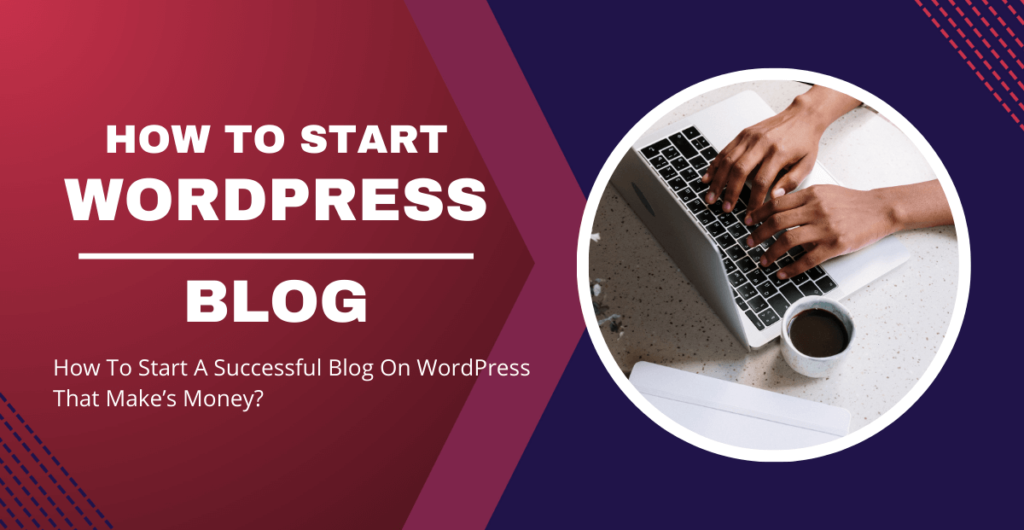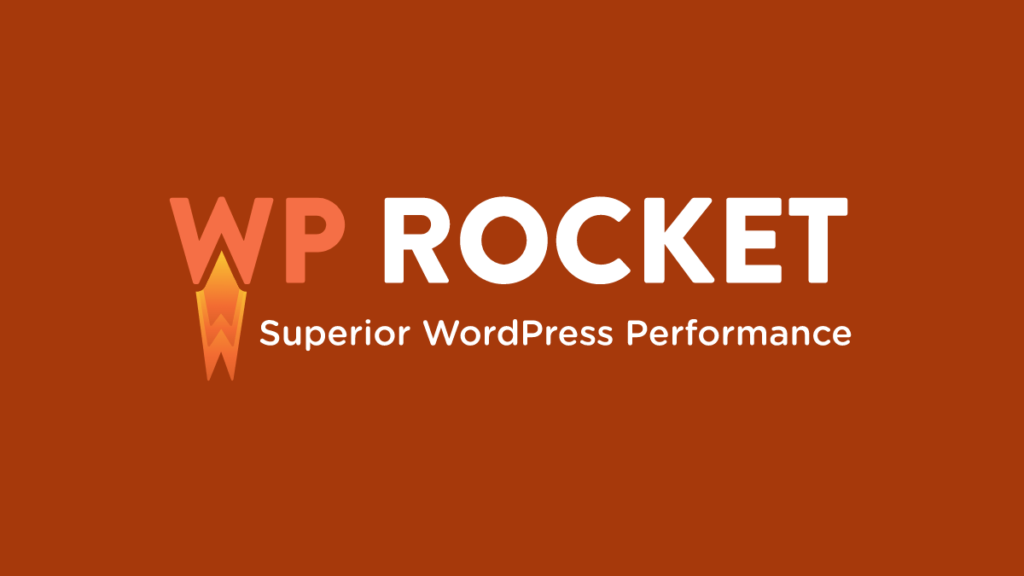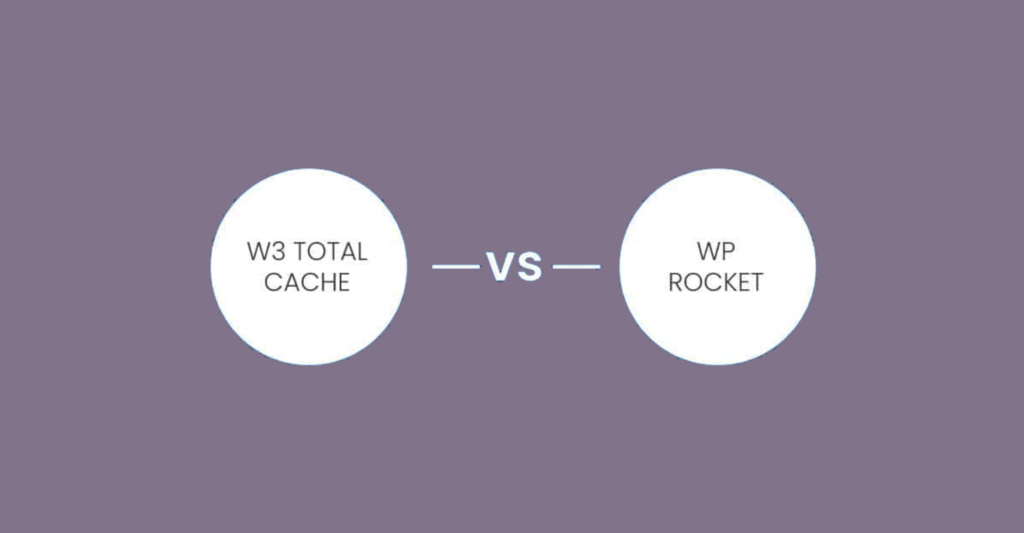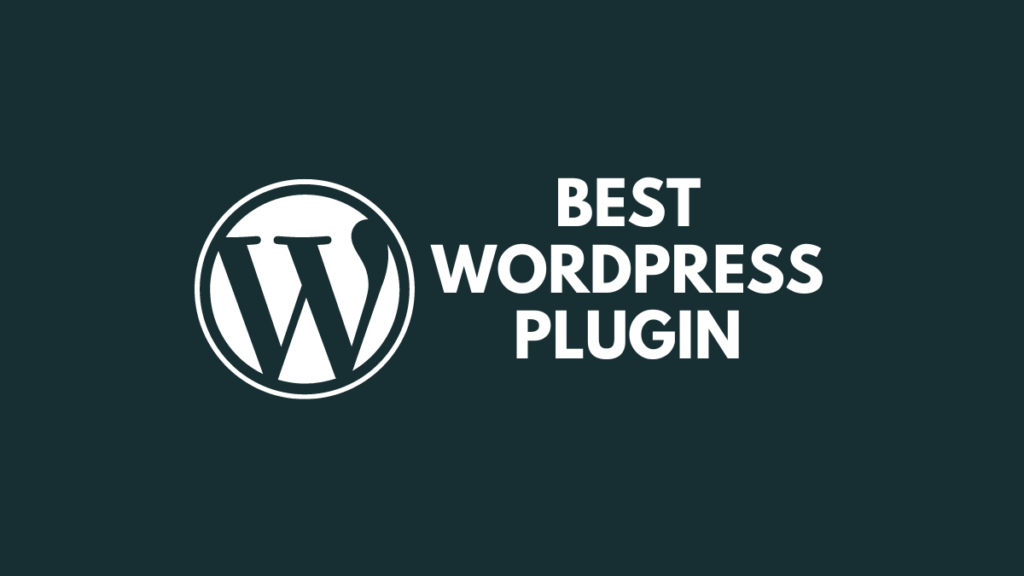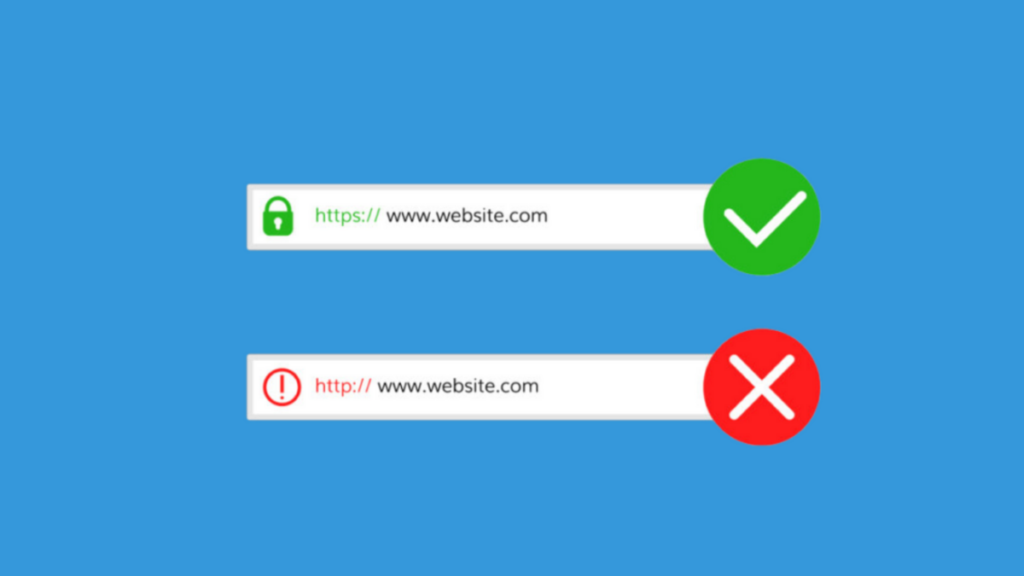Are you looking to start a blog that makes money but don't know where to begin? This article will show you how to start a blog using the best CMS for blogs WordPress. Then you learn how to monitize it and make money from it.
Learn how to start a blog that changes your life in 10 easy steps.
Follow this step-by-step guide to discover the tactics I used to create my WordPress blog and monetize it to generate regular income.
Much of the advice you find on the Internet about starting a blog on WordPress is outdated. This guide will provide you with the most up-to-date information and recommendations on how to start a successful WordPress blog in 2023.
Taking advice from someone who has been building websites and blogs for over 15 years is like asking directions from someone who still relies on an old map that hasn't been updated in years.
The blogging world is different than it was in the past. The best way to start a blog with easy steps is to update your strategies over the next few years.
So how to start a successful blog and make money?

how to start blogging on wordpress?
Starting a personal blog to make money is easy! Just follow these steps and you're on your way to creating an online journal that will keep you motivated and inspired.
let's start!
1. Choose a niche
Before you begin writing, choose a niche for your blog and consider how to launch a WordPress blog; this means selecting a subject matter that genuinely interests you and that you believe others will find engaging. If you’re not sure where to start, check out this list of the top 100 niches.
If you want to know how to start blogging step by step in 2023, remember that you don’t necessarily need a revolutionary idea. Instead, your blog should focus on something specific. For instance, my blog serves as an example of a digital marketing blog.
What makes your blog unique are your experiences and your distinct voice. You have a dynamic personality that will naturally attract others, including your family, friends, and co-workers.
To choose your blog’s niche, you need to ask yourself two key questions:
Do I like learning and writing about this topic? If you genuinely enjoy the topic, it will shine through in your writing. It's essential to be passionate about the subject you're going to write about, especially if you want to launch a WordPress blog successfully.
Moreover, your enthusiasm will enable you to create consistent content that can help grow your audience. If you’re still hesitating, think about what your family and friends frequently seek your advice on. It could be related to sports, cooking recipes, or relationship advice.
Are there other people interested in the same things? You may feel like you’re the only 20-something who is obsessed with digital gadgets. However, rest assured that other people out there share your interests.
You might be wondering if your idea needs to be more original or narrower. Whether you're aiming to launch a WordPress blog for travel or you're interested in starting a book blog, it's essential to avoid using overly generic terms like “travel.” Instead, opt for a more specific focus, such as “health” or “the environment.” This approach can draw in a more targeted audience and increase your chances of success.
2. Choose a domain name (Blog branding)
The fun part is now finding a name for your blog.
This name is your brand. People will remember you as this.
But don't overthink it. The magic of blog branding is built over time. Keep moving forward even if you feel stuck.
To find the perfect name, start by brainstorming.
In the first step, we talked about unleashing all your ideas and defining your blog niche.
Now, it's time to take those ideas and turn them into a name to register a domain name.
Open a new spreadsheet or grab a pen and paper. Then, spend about 10 minutes writing down all the words that come to mind.
Then, start combining words and phrases until something stands out. Aim for 3 to 14 potential names and write them down.
Now it's time to see if these names are available as domains. The domain of your blog is where it is located on the Internet.
For example, hostdebitmedia.com/en is my blog domain name.
Hostdebit Media is also my trademark. When you type in the address bar to find me, this also means that you can't use this domain because I already own it.
It is possible to use your name as the domain name? Yes, but in most cases, choose a different name to start blogging on WordPress; this will make it much easier to sell it if you want to.
Another way to find a suitable name for your blog is to use online business name generators. The goal is to check for available domain names. Start by using Bluehost's domain name checker. Then, type in each potential name one by one to see what is available.

After clicking the button Check Availability, you'll see whether or not the name you chose is in use. Then, keep trying your potential domain names until an option you like is available. If none of your possible terms are known as .com, start from the beginning and keep thinking.
Finding the perfect name and domain name for your blog may take some effort, but it's worth it. Here are some additional tips for choosing a great domain name:
- Always choose a .com whenever possible.
- Avoid using numbers, dashes, etc.
- Keep it as short as possible.
- It should be easy to say and understand
- Avoid misspelled and complicated words
- When you find an available name, add it to your cart.
- If you still need to buy it, I'll show you how to get it for free in the next step.
3. Choose a web hosting provider

Certainly, here's the text with corrections:
Even if you have created a blog, it can only be seen online with web hosting. With a domain name, your blog will have an address. The two are inseparable.
Now, it's time to get your blog online.
Initially, it might appear complex, but fret not; it's far simpler than it may sound.
To kick things off, you'll require web hosting (the home for your blog's content) and a domain name (the address leading to your blog). Wonderful news! Bluehost, the web hosting provider I highly recommend, provides both services as a bundled package. If you're looking to start a WordPress blog, Bluehost is an outstanding choice.
In the realm of web hosting, you'll encounter a plethora of options, with prices ranging from 1 euro to 1000 euros per month. However, if you're embarking on a fresh blogging journey, Bluehost is the optimal and most renowned choice.
At this stage, you don't need anything fancy. When you reach more than 25,000 unique visitors per month, consider upgrading, but Bluehost can grow with you.
Plus, it's incredibly affordable. You also get a significant discount as a reader of this blog. And your domain name is free for the first year.
So go to Bluehost.com and click the “Start Setup” button.
Next, you'll encounter four distinct plans. Scroll down and opt for the basic plan priced at $2.95 per month, which covers all the essentials for a seamless start.

And you can always upgrade to a higher plan later if you need it. So, for now, choose the basic plan.
Then, you have the option to register the domain name you found in step 2. You already know it's available, so this step is a breeze.
Please enter it in the field on the left, make sure the dropdown list is set to .com, then click Next.
Next, sign in using your Google account or manually enter your personal information.
Afterward, please continue scrolling down the page and make your selection regarding the duration of your advertisement using the dropdown menu labeled “Package Information.” Opting for a 36-month subscription is advisable as it offers the most favorable rates.

Alternatively, you can opt for a 24-month or 12-month contract if you prefer a more budget-friendly option at this moment.
Lastly, there are additional features available for you to consider.
Let's take a look at these plan extras and see which ones you need and which ones you don't. Honestly, you only need one of them.
But let's talk briefly about each of them:
- Domain protection and privacy: your personal information will not be disclosed to the public, as Bluehost's business information will replace it. I highly recommend investing in this domain.
- Codeguard Basic offers daily backups for your blog, but since there are alternative options available, it's optional.
- As for Bluehost SEO Tools, it might not be the best choice when there are superior free SEO alternatives like Semrush and Ahrefs.
- Consider the Microsoft 365 Mailbox trial for managing your business email account, although I recommend exploring Google Workspace as an alternative, especially since it's free to try.
- When it comes to SiteLock Security Essentials, while it protects your blog from malware, there are more effective alternatives to consider.
In summary, the only additional package you should prioritize is Domain Protection and Privacy, which safeguards your personal information. Without it, your phone number, home address, and email address could be accessed by anyone.
Bluehost uses this example to show how privacy + domain protection prevents personal information from becoming public:
You still own the domain name, but your contact information is protected from fraudsters and unsolicited mail.
The extra investment is well worth it. So be sure to uncheck all the boxes except the privacy + protection.
You're almost there; there's only one thing left to do. Enter your payment information, read the auto-renewal terms and conditions, and click submit. After that, the difficult part is done.
Congratulations on your new blog! Remember to follow the rest of the instructions to set up your account. Then, you're ready to move on to the next step.
4. Install WordPress
You can only create a blog with a content management system (CMS). I run all my blogs on WordPress because it is user-friendly, free, and powerful.
If you choose to create a blog that is not on WordPress, you will find that it will cost you a lot more because WordPress provides a plethora of free plugins that enable you to customize your blog in countless ways.
Even without any technical expertise on your part, you can install WordPress in four simple clicks.

Here's how to create an easy blog from your Bluehost dashboard:
- Click on “My Sites” on the left.
- Add a new site.
- Create a new site.
- Finally, follow the steps to install WordPress automatically by Bluehost.
In just one minute, you will have a fully functional and operational WordPress blog.
5. Choose a theme
In the world of the web and the internet, to create an easy blog site using WordPress, you will need graphic designs, which are called WordPress themes.
If you ask me which theme I use for my blogs, I will tell you about the Astra theme. After all these years, the Astra theme stands out as the best option for creating and managing WordPress blogs because it’s fast and provides an easy way to create a blog, plus it’s free.

When choosing a WordPress theme, it's important to consider its SEO and search engine optimization score.
There is a multitude of WordPress blog themes available for selection, yet falling victim to the allure of novelty can often leave you without a suitable choice.
Remember, you can change your theme at any time, so don’t get too distracted by the bells and whistles.
First of all, you need to log in to your WordPress administrator. You can access this by going to yoursite.com/wp-admin. There, you will need to enter your credentials to log in.
If you’re new to WordPress, the dashboard may seem a little intimidating at first, but you’ll become an expert with a little practice. To install a new theme in WordPress dashboard:
- Hover over the “Appearance” in the sidebar
- click on “Themes.”
WordPress comes with a few free themes, but instead, we’ll look for more beautiful themes that will make your eyes shine instantly. Then, click the “Add New” button at the top to access thousands of WordPress themes.
It should be noted that your taste and mine may be different. Fortunately, WordPress has a “Feature Filter” that allows you to search for something that will suit your style.
The three categories are “Subject,” “Features,” and “Layout.”
Here’s what your filter requests might look like:
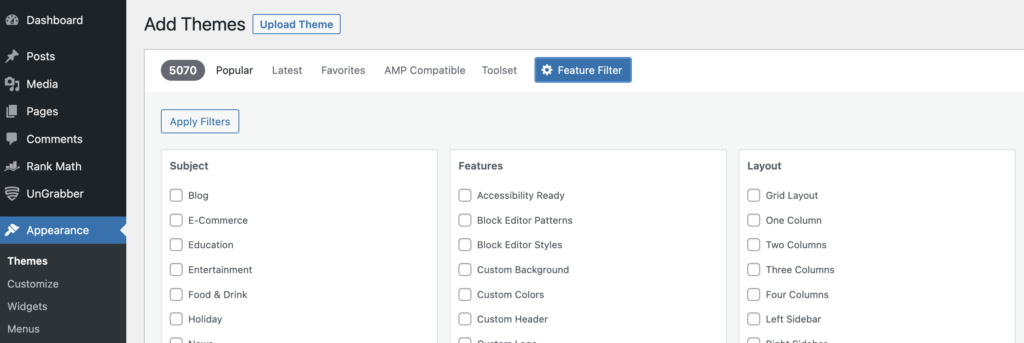
After applying the filters, you will see amazing themes that would otherwise cost thousands in design fees.
For you, it’s free, as I want to share what I discover with you.
By clicking on the theme thumbnail, you'll receive an immediate preview of how your blog will appear. Evaluate whether it aligns with your style and the subject matter you plan to explore.
Once you are satisfied with the preview, click on the “Install” button.
Then, once the installation is complete, click the “Activate” button, and you’re ready to go.
If you can’t find a theme you like, there are other free and paid WordPress themes that you can purchase from sites such as:
Your theme is now activated and prepared for use. Next, let's proceed with customizing it to your liking.
6. Install essential plugins
To begin with, there are an infinite number of customizations you can make to a WordPress blog.
After that, we'll stick to the basics. Plugins add functionality to your WordPress blog.
There are plugins for everything from social media integration to SEO optimization. Some essential plugins that you may want to install include:
- Rank Math SEO – RankMath SEO is the best WordPress SEO plugin on the market, and it's free to use!
- ShortPixel – ShortPixel is the best image compression plugin for WordPress, and it's free to use for up to 100 images per month!
- WP Rocket – WP Rocket is the best WordPress caching plugin, and it's worth the investment to speed up your website!
- WPForms – WPForms is the best drag-and-drop form builder for WordPress, and it's easy to use even for beginners!
- MonsterInsights – MonsterInsights is the best Google Analytics plugin for WordPress, and it's a must-have for any blogger or website owner!
- Simple SSL – Simple SSL is the best SSL plugin for WordPress, and it's essential for securing your website!
- OptinMonster – OptinMonster is the best popup builder plugin for WordPress, and it's a great way to increase your email subscribers and conversions!
- Akismet – Akismet is the best anti-spam plugin for WordPress, and it's a must-have for any blogger!
- WP Mail SMTP – WP Mail SMTP is the best email delivery plugin for WordPress, and it's essential for ensuring that your emails are delivered reliably!
- AddToAny – AddToAny is the best social media sharing plugin for WordPress, and it makes it easy for your visitors to share your content on their favorite social media platforms!
Themes are the foundation of your design and include basic functionality. WordPress also offers plugins that can add or extend the functionality of your blog.
For example, you can use plugins to add contact forms or sliders. While these features may seem basic, they are not always available by default.
The first step is to click on the “Customize” button of your active theme.
Also, the menu options in the sidebar vary depending on the theme you choose. The main category to change is “Site Identity”.
Here you can add your blog name and a tagline if you wish. When you are done, click on the “Publish” button.
Optimize Your Blog For Search Engines
Search engine optimization (SEO) is a multi-million dollar industry.
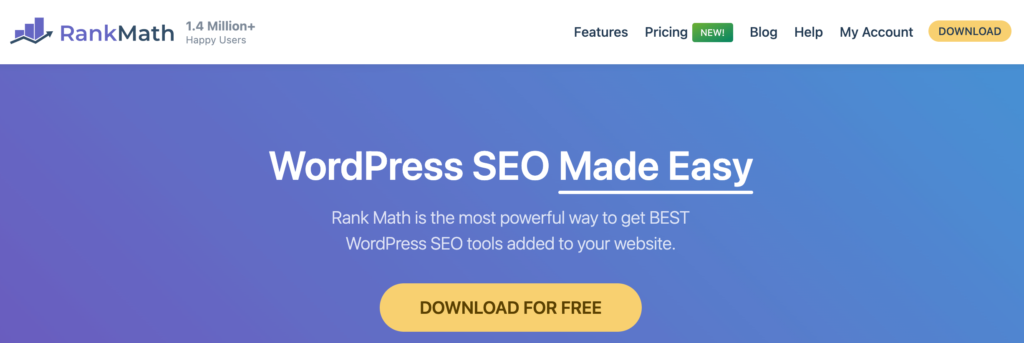
When it comes to SEO, is the process of optimizing your website so that it is found in search engines for specific keywords and phrases.
I attribute much of the success of this blog to being easily found for relevant search terms.
If you're new to web SEO, this new feat may seem daunting.
But WordPress makes it incredibly easy to optimize the technical aspects of your blog.
The majority of your SEO efforts will involve creating content that speaks to real people. Whether it's through text, video, or images, your job as a blogger is to create a relationship with your readers.
And what better way to do that than through informative and relevant conversations?
You can start by downloading a plugin called Rank Math SEO.
Hover over the plugin menu on the side and click “Add“.
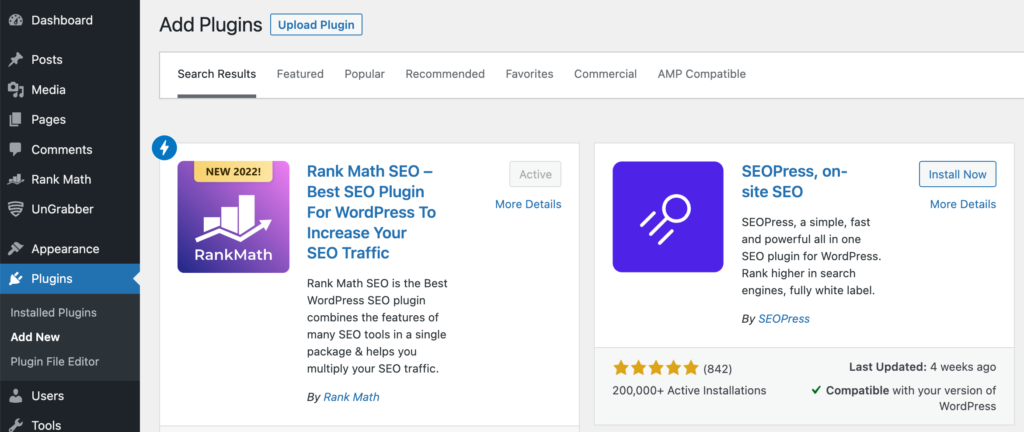
Search for “Rank Math SEO” in the search bar and it will be the first result that appears.
Click on the “Install” button. Then click on the “Activate” button once the installation is complete.
After that, you can access the plugin settings from the new SEO menu in the sidebar or by clicking on the icon at the top.
Next, go to Rank Math SEO and run the Setup Wizard.

Rank Math will walk you through a series of quick steps to optimize your blog. Check out my article on how to set up the Rank Math SEO plugin.
Add XML Sitemaps To Google Search Console.
Finally, the last Rank Math parameter to configure is an XML sitemap. An XML sitemap is a file that lists the URLs of your website.
It should be noted that the XML file helps Google and other search engines crawl your site for new articles and pages. Fortunately, Rank Math has a built-in feature that automatically updates your sitemap, so you can click on it and forget it.
In the “Sitemap Settings” tab, set to “Enabled” and save the changes.

Here you can set up different sitemaps as an example:
- Articles.
- Pages.
- Videos.
- Categories.
- Affiliate line.
- News.
- And more.
Here is the sample XML sitemap generated by the SEO for the WordPress Rank Math extension for my blog.

You can play around with these settings endlessly, but everything we've configured so far will get you started in the right direction.
Setting up Permalinks for Good SEO Score
First of all, permalinks are static hyperlinks that lead to a particular blog post or page. By default, WordPress sets your permalinks to yourwebsite.com/postID.
This is not a nice choice and does not help anyone understand the content of the page before visiting it.
The simple solution is to define a permalink structure.
In the left sidebar, hover over “Settings” and choose “Permalinks“.
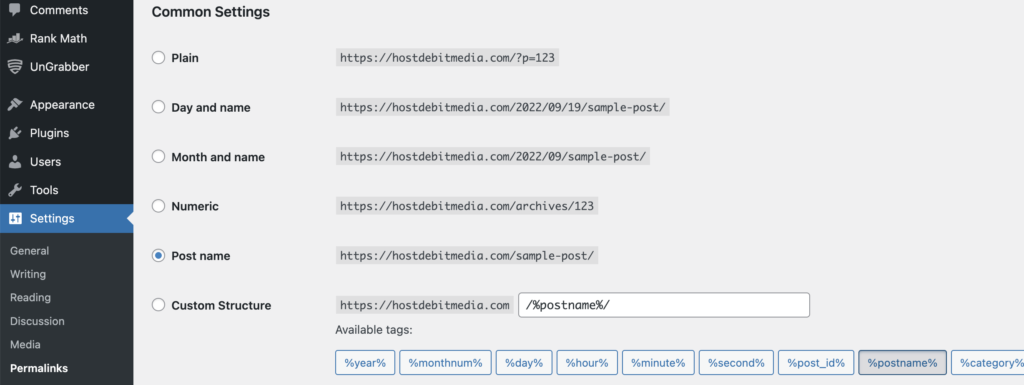
You also have several options to choose from. I use the “Post Title” structure on my blog, which uses the keywords in my title to create a unique permalink.
So save the settings after you select them. You'll see this in action a little later.
Next, if you're still with me, you've purchased your domain and web hosting, installed a theme, and optimized your website to be crawled and found by search engines.
Now we come to the basics of Blogging for beginners.
What will you write about in your blog?
That's what we'll look at.
7. Find your audience and Think About Your Blog Topics
From a technical standpoint, your blog is set up and ready to go. When it comes to generating topics, the world is your oyster.
The majority of your blog posts will come from personal experiences, passions, successes, failures, and new learnings. In addition, people use questions as search queries, such as:
- What should I write about?
- What should I blog about?
- Should I start blogging?
Once you've chosen a niche, you'll need to decide who your ideal readership will be. Think about what kind of people you'd like to read your posts.
So naturally, you need to start by asking your questions. I use a series of questions and a systematic process to come up with ideas for blog topics.
- What excites, interests, or sparks passion in my readers?
- What are the common challenges my readers face?
- What are the character traits of my readers?
- What aspects of my niche do my readers like?
- What do my readers hate about my niche?
- What do they care about?
- What topics interest them?
- How often do they visit blogs?
- Do they prefer short or long form content?
You don't need to pick up a pen and paper or use your favorite word processor.
It's 2022, artificial intelligence (AI) is everywhere, and it's going to dominate every interesting industry.
There is blog post writing software with SEO optimization, which will help you write blog posts easily and reliably in a short time.
I have been using Jasper Ai for a year, that's how I manage to write and optimize my blog posts every day. You can try it for free, they offer 10,000 free for writing your first 10 articles of 1000 words or 16 articles of 600 words.
Jasper Ai is one of the best AI writing software. There is no need to worry. It's not complicated, and it won't take much time.
8. Write and publish your first blog post
WordPress uses an intuitive Gutenberg editor, similar to your favorite word-processing tools. New entries are created directly from your WordPress administrator.
Click on “Posts” in the left sidebar.
This will bring up a list of your blog entries in descending order. Since we are working with a recent installation, you won't see anything here.

To create a new entry, click the “Add” button at the top or in the sidebar.
You will be taken to the editor, and you can start blogging.
Click on the “Toggle Toolbar” icon to get additional editing options to enhance your posts. These new tools are especially useful for creating subheadings in your posts.
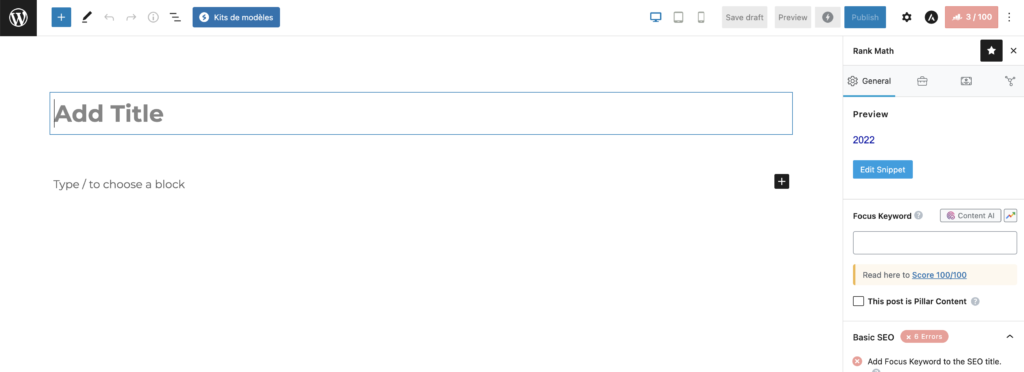
Add one of the titles you came up with in your brainstorming session to the title text box. Immediately afterward, WordPress will create a permalink based on the keywords used in your title.
Before you start writing your first post, I suggest you read my article on the plugins you will need for your content.
You can start typing the body of your article in the large text box and write until you are satisfied with your content.
Once your article is finished, you'll need to do some last-minute optimizations using the Rank Math SEO plugin.
Rank Math SEO has publication-specific settings that are located just below the main text box.
The 4 main parameters are “SEO Title“, “Permalink“, “Meta description” and “Main Keyword“.
If you fill in these settings, you will get a preview of what your post will look like when it is discovered in Google search engine results.
Create SEO titles and meta descriptions that are clickable and explain what your article is about.
The WordPress plugin Rank Math SEO will provide you with real-time information as you begin optimizing your title and description.
Aim for as many green lights as possible, but don't worry if you can't get a perfect score. If you can get a 90% score, you're on the right track.
Finally, if your blog has thumbnails, you need to set a featured image. Featured images are thumbnails that appear above each post.
You can set your selected image by clicking on “Featured Image” at the bottom of the right sidebar.
Before publishing your post, you can see what your blog post will look like by clicking on the “Preview” button at the top right of the page.
Before you hit the “Publish” button, you want to make sure your post looks and feels the way you want it to.
To get started here's a quick checklist to consider before hitting the publish button:
- Speak in a conversational tone.
- Content flows naturally.
- The text should be easy to read and have enough white space.
- Use headings to separate sections.
- Use bullets and lists.
- Check for typos and grammatical errors.
- If all goes well, you're ready to publish your first blog post.
Scroll to the top of the page and click the publish button to publish immediately.
You've managed to create a blog that looks good and is optimized for search engine traffic.
Isn't that nice?
Note: If you're writing for yourself, then you probably won't need to worry too much about how well written your posts are. However, if you plan to publish your work online, you should make sure your writing style is consistent with the tone of your site. This means using simple language and avoiding jargon.
9. Promote your blog
Create an Editorial Calendar and promote your blog (Blog promotion). There are several ways to promote your blog. One of the easiest is by sharing links to your site on social media sites such as:
- StumbleUpon
- Tumblr
- and more.
Another option is to use free services like Minter. These tools allow you to schedule tweets, share images, and post updates to multiple social networks at once.
One of the biggest mistakes I see bloggers make is to only blog when they “feel like it“.
They overlook the fact that their new fans want more content and fail to satisfy them.
Editorial calendars work the same way.
They allow you to reach ambitious goals in small steps. Plus, they keep you organized. They streamline your social media and email marketing efforts.
And you'll be surprised to find that an editorial calendar can even help you develop your personality and integrity.
We are creatures of habit.
The more you stick to your dates, the faster you'll grow your audience.
So how do you get started and how much will it cost?
Nothing.
Just open a new Excel spreadsheet. If you have multiple writers, you can share the sheet using Google Drive.
Start with four columns: publication date, title, keyword, and notes.
Your needs may be different from mine, so feel free to add additional columns if necessary. For example, you can add the columns “Author“, “Category” and “Character“.
The simpler your calendar, the easier it will be to digest and follow.
Browse your calendar on your iPhone, Android, or the one hanging on your refrigerator. How often can you post?
Once a month? Once a week? Every day?
Be mindful of your goals, as not always meeting deadlines can lead to a complete shutdown.
Next, review the answers you came up with during your brainstorming session and add them to the “Title” column.
Your titles don't have to be perfect right now. Add a working title that you can embellish before publishing.
Sometimes the best headlines appear after the article is written. This will give you a clear idea of what your article is and who it is for.
The “Focus Keyword” column is for SEO purposes. If you target specific keyword phrases that you want to rank for, add them here.
If nothing comes to mind, you can do some keyword research later.
Finally, there's the “Notes” column.
This section is a great place to jot down any brilliant ideas that come to mind. Notes are also a great tool for staying focused on the topic and approaching it coherently.
You should be able to write a set of 30 blog post topics with deadlines you're sure to meet.
That's nearly six months of blog posts for a weekly writer.
That's right. You have the editorial, but you're still missing the calendar.
Go to Google Calendars and create a new calendar. You can do this by clicking on the down arrow to the right of “My Calendars.”
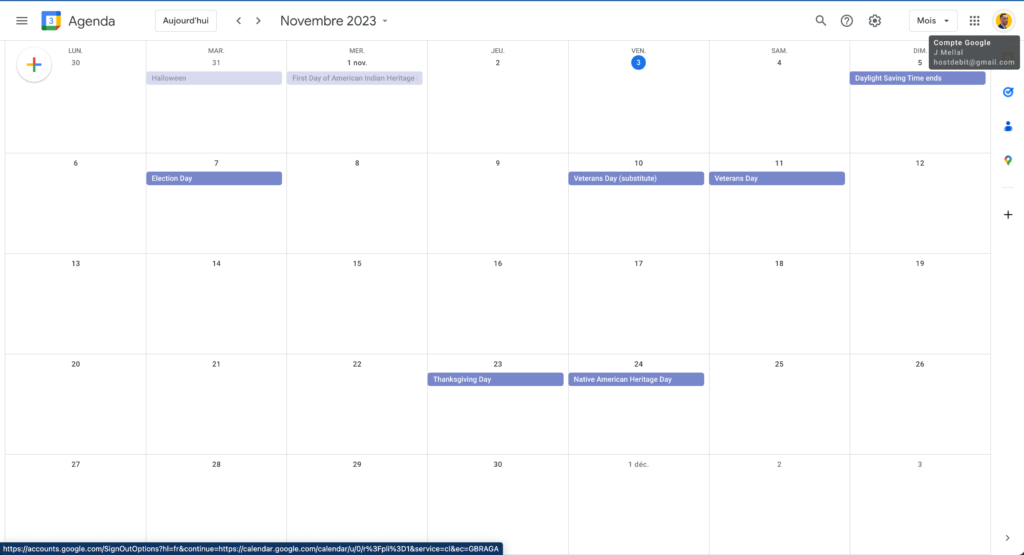
Once you've filled in the essential information, click “Create Calendar” and get to know your new best friend.
If you don't have a team, share it with your spouse or a good friend who is willing to hold you accountable to your goals.
Make sure your calendar is selected in the left sidebar and change your calendar view to weekly.
If you only write when it's convenient for you, you're heading down a dangerous path.
You'll end up running out of ideas, losing your motivation, and forgetting the motivation you once had to start a blog.
Editorial calendars are a quick solution to blogger procrastination.
Note: If you're looking to build relationships with other bloggers, consider joining a blogging community. Many communities offer opportunities to connect with others who share similar interests. They also provide an opportunity to learn new skills and gain inspiration from other people's experiences.
10. Monetize Your Blog To Generate Income
The final step is to monetize your blog to generate income and earn money from it.
You may not want to monetize your blog immediately.
If so, that's a good thing.
Listen to me, conventional sales styles looked like this:
- Think of an idea.
- Create a product.
- Try to sell the product.
- File the balance sheet.
This method failed for so many individuals and companies because they didn't create an audience before they created it.
They based market demand on “hunches.”
And that's why blogs are the perfect channel for monetization.
You can create an audience through a variety of mediums, such as your email newsletter, blog comments, and social media channels.
Ask Your Audience
Blogging lets your audience to know what you know. If you think about your favorite bloggers, you can feel like you know them on a somewhat personal level.
Also, your market research becomes much easier. I ask questions at the end of my blog posts that generate hundreds of comments.
You can also send out emails with a survey, using email marketing services that offer free tools like Mailerlite, to get valuable information about your target audience's expectations.
By creating a blog, you open doors to talking with potential customers. People who will give you honest feedback on what they want from you.
If 90% of your survey respondents tell you they want a formal digital marketing course, what do you think they want?
A digital marketing course they're willing to pay for.
Make Money With Ads
If you don't want to sell a physical product or service, you can do what other publishers do.
Anyone can put an ad on their blog using Google Adsense. But the real money comes from private sales of ad space.
If you create a high-traffic blog, you can earn a full-time income by selling ad space on your website to large companies.
The only thing you need to do is add their banner and keep doing what you do best: writing about your passion or expertise.
Selling Physical Products
Your success is mainly due to your blog. You'll publish quality content, understand your audience's needs, and direct them to your Amazon sales page.
The reason monetization is the last step in creating a profitable blog is that money should not be the driving factor in your initial efforts.
As you build meaningful relationships and a community, your audience will point you in the right direction by sharing their needs.
If you want to make money blogging online, it will be up to you to meet these needs.
starting a blog with wordpress guide – FAQ
Why Start A Blog?
Another excellent reason to start a blog is that it is rewarding and enjoyable for people who want to create something on their own. Blogging is a lonely pastime for the most part. One of the reasons for establishing a blog in 2024 is to keep yourself occupied. There are no distractions for you to deal with.
Who Can Start A Blog?
Keep in mind that creating a blog is actually quite simple. Every day, thousands of new blogs are launched. In 5 minutes, anyone can start a blog, but only a few people will develop blogs that matter.
What Is the Purpose of Creating a Blog?
The main purpose of a blog is to connect with your audience. It also increases your traffic and sends quality leads to your website. The better and more frequent your blog posts are, the more likely your website will be seen by your target audience and visited.
Why Should You Start a Blog?
Often, people think they have to start blogging about popular topics to make money. While it's true that you can attract a wider audience by writing about smartphones instead of blogging about a specific topic like tuna fishing, it's not the right solution.
What Can I Start A Blog About?
Enjoy your life. Since you are blogging about your daily life and therefore need to live your life, you still need to do that. Some things always come before blogging: exercise, health, relationships, experiences, personal development, and contribution. In other words, live a life worth writing about.
how much does it cost to start a blog
It’s impossible to pin down a specific cost of starting a blog. You should anticipate spending between $50 and $500 on getting your blog site up and running. After that, your monthly expenses should be in the range of approximately $25 to $45.
Is It Worth Starting A Blog?
To get to know new folks Starting a blog exposes you to a large community of new people, which cannot be denied. Each blogging topic has a vibrant community to support it. What’s amazing about this is that it allows you to meet new individuals who share your interests.
How Many Posts To Start A Blog?
I suggest starting with at least 10 to 15 posts when starting a blog that will generate significant traffic. Publish regularly after launch; one study found that having at least 24 blog articles can increase traffic by 30%, and having more than 50 posts can increase traffic by 70%.
How Long Does It Take To Start A Successful Blog?
Building a successful blog takes an average of 2-4 years. Around the two-year mark, you should have enough content and a large enough audience to try out other monetization methods.
Is Blogging Still Profitable?
Yes, blogging is still profitable. In fact, it may be more profitable than ever before. According to a recent study by HubSpot, the average blogger earns about $20,000 per year. That means that if you blog consistently, you could potentially earn enough money to quit your job.
How do bloggers get paid?
Bloggers typically earn money through advertising revenue generated by their sites. Some bloggers also sell products they review, such as books, DVDs and electronics. Others may write about topics related to their niche, such as travel, health, parenting, pets, food, decorating and gardening.
Does it cost money to start a blog?
Yes, it costs money to start. However, if you want to know how to start a blog with no money, there are many free blogging platforms out there such as WordPress.com and Blogger.com. These sites allow you to create a free blog without having to purchase any software.
how to run a successful blog?
To run a successful blog, you must focus on creating high-quality content valuable to your target audience, optimizing your blog for search engines, promoting your blog through social media and other channels, building a community around your blog, and consistently engaging with your readers. It also helps to have a clear niche and a unique perspective, as well as a well-designed website that is easy to navigate and visually appealing.
Conclusion
Creating a blog is easy. Creating one that will be successful and make money takes a lot of work, dedication, and courage.
But the rewards far outweigh the risks.
Blogging is affordable and more accessible today than it has ever been.
Like anything else in life, there will be obstacles that will try to throw you off course. But I encourage you to move forward with your passion and share it via your blog.
Everything you need to get started is right here. You can get started right away by getting your free domain and web hosting with Bluehost in minutes.
How can i start blogging? As you begin your blogging journey, remember that you are talking to humans.
- Be yourself.
- Be adventurous.
- Be honest and transparent.
If you continue to consistently create quality content, your tribe will rally to you, listen to you, and respond to you.
Read also my article about how to become a blogger.
Have you ever created a WordPress blog? What's holding you back from creating a blog?
